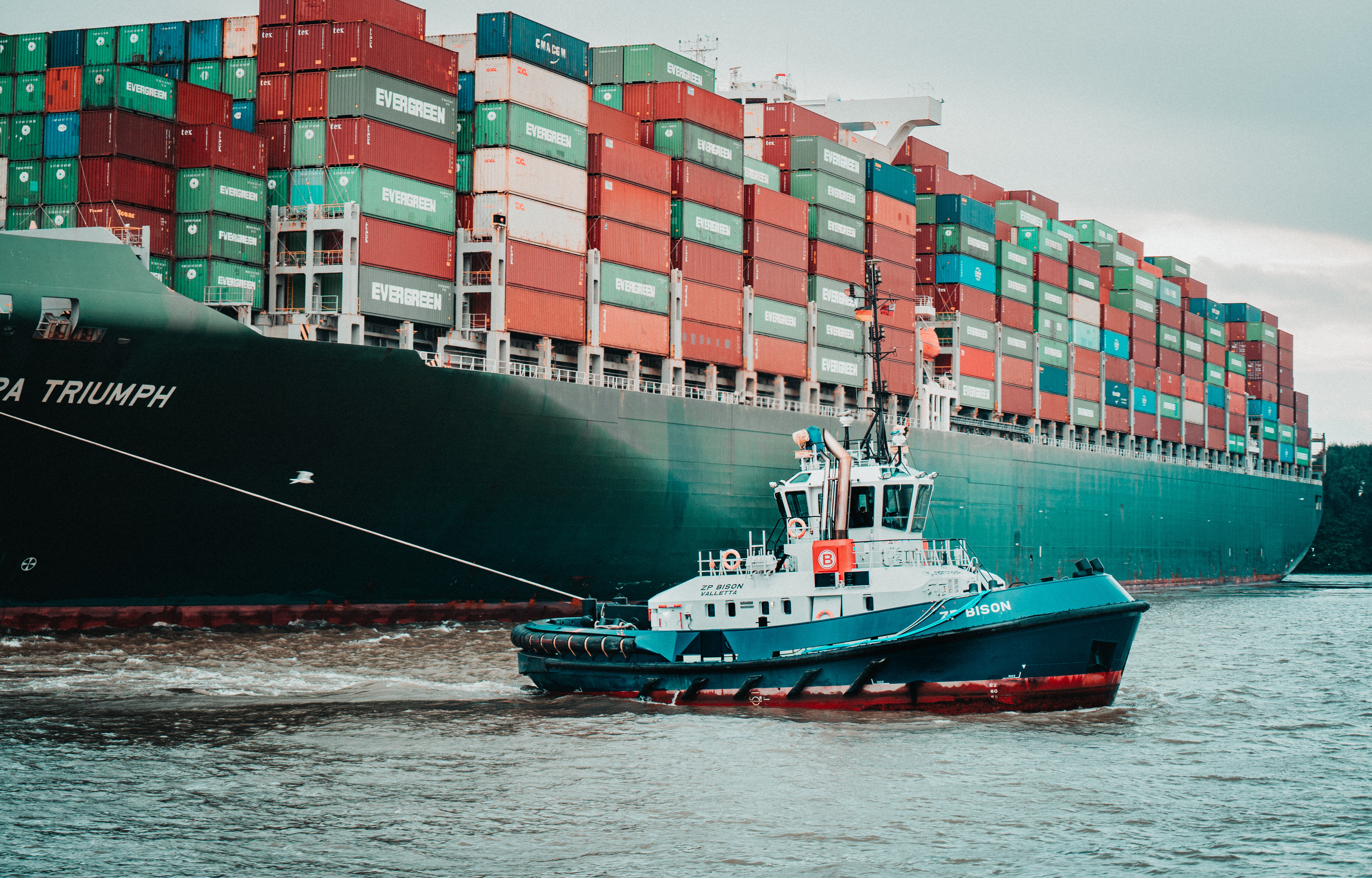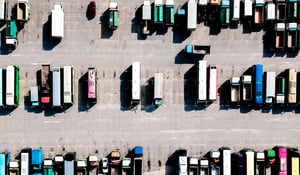Supply Chain sustainability is increasingly being recognized as a critical component of corporate social responsibility (CSR). Managing the supply chain’s social, environmental, and economic impacts optimizes operations.
It creates, protects, and grows long-term ecological, social, and economic value for all stakeholders involved in bringing products and services to market. But it hasn’t been easy. While achieving supply chain sustainability has constantly been challenged by the supply chains’ complexity, costs, and risks, the challenges reached epic levels during the pandemic. Those challenges are only forecasted to increase with a recession on the horizon.
How the pandemic impacted supply chains.
Take the cost of shipping a standard rectangular metal container: In July of 2021, it hit a record of $20,856 just to ship it (double the price just six months prior).
And this disruption is being felt by most companies worldwide. Consider these stats … during the pandemic:
- 94% of Fortune 1000 companies are seeing supply chain disruptions
- 75% of companies have had negative or strongly negative impacts on their business
- 55% of companies planned to downgrade their growth outlooks (or already had)
- 71% of those surveyed in 2020 said that they didn’t have a business operations’ continuity plan
Known as The Great Supply Chain Disruption, the challenges brought on by the pandemic have continued throughout 2022 and are likely to go well beyond. But first, let’s see how we got to where we are today.
With the onset of the pandemic and its endurance, uncertainty has become the norm at an unprecedented scale. First, because consumers weren’t going on vacations or eating out, many also benefited from stimulus checks; they had more disposable income to spend on “shippable” products. And those who successfully transitioned to a work-from-home environment tended to spend money on improving their surroundings and finding alternative ways to manage self-care (e.g., equip home offices and home gyms, redecorate, etc.). Not only did the onset of the pandemic create a spike in demand, but it also significantly shifted the mix of products in demand.
What followed was a second impact effect that kicked in when suppliers and manufacturers began to shut down due to COVID-19 outbreaks – outbreaks that only more recently have started to wane.
As a result, the machines and supply lines that were idled at the beginning of the pandemic because everyone thought demand would stop or, if nothing else, slow down, proved challenging to restart. For example, shipping ports couldn’t manage inbound shipments because of labor shortages and safety concerns; staffing, in general, became an issue (and still is) as the supply chain became one of the hardest-hit industries during the great resignation.
Even the fastest supply chain leaders had difficulty maintaining any sense of flow, as metaphorical waves of new problems seemed to crash upon their shores almost daily.
How economic uncertainty (aka a looming recession) could fuel the fires.

Uncertainty has created a steady flow of changes making planning and predictions seemingly impossible and the recovery of the supply chain complex.
What was once considered economic uncertainty has now transformed into a looming recession, where the US is seeing its worst inflationary period in the last 40+ years, making supply chain leaders wary of potential drops in demand if prices continue to increase in relation to interest rates. This puts supply chain leaders in a cloudy predicament – do they lower inventories in anticipation of lower demand, so they’re not stuck with surplus stock? And if demand doesn’t increase, will they run the risk of being understocked, missing consumer expectations, and losing market share?
What to do to create an iron-and future-proof supply chain.
So, what can organizations do in times of uncertainty where business must go on? When it comes to supply chain sustainability during times of crisis (and whenever there’s a shift in the supply chain landscape), resiliency is king. And, when you don’t have the in-house expertise or technology, the startup ecosystem is your secret weapon.
Armed with tools for transparency and flexibility, startups can help larger, more established companies navigate these growing complexities. But you’ll want to ensure you have the supply chain resiliency basics in place, too.
With all of the back-to-back bad news about the pandemic and a recession, it may seem daunting to bring resiliency and sustainability to yours. Still, it is possible. It starts with a few basic steps.
Get a deep understanding of what you already have.
.jpg?width=1920&height=1080&name=Untitled%20design%20(2).jpg)
Do you (and everyone across your organization) have a clear vision of what you want your supply chain to accomplish and how it will do it? For example, companies need to use high-quality and valuable data for transparency and traceability tools to work across complex supply chains. To do this, companies need to understand what kind of data they need from their supply chain to convey the journey of their products accurately and how to incentivize fragmented operators to input accurate data into their systems. Understanding what your needs are and how to articulate them can be a challenge in and of itself.
Suppose you have any doubts or simply want to make sure. In that case, you may want to collaborate with a growth partner who has developed a comprehensive set of methodologies, tools & unique services to help businesses better understand and articulate where their challenges lie so that they can identify and better foster innovation opportunities, at scale, in a fraction of the time, while also providing greater transparency & lower risk.
How the startup ecosystem helps.
.jpg?width=1920&height=1080&name=Untitled%20design%20(5).jpg)
So, what if you assess your supply chain resiliency and identify that it needs work? What’s next? Have you considered tapping into the startup ecosystem? Why do it alone when there are startups already innovating to optimize resiliency across the supply chain framework. In previous posts we’ve shared examples of startups that can help from sustainable packaging to circular economy solutions.
“Growing consumer demands and competitive innovation are constantly changing the requirements of businesses to compete and successfully sustain or grow their market share. For supply chain organizations, there is an ever-growing need to invest in emerging technology solutions that future-proof their operations from disruption and set a foundation for resilience, future growth, and market competitiveness,” says Jeffrey Way, Practice Partner of Supply Chain Innovation, Pilot44.
The startup ecosystem can create supply chain sustainability that goes a long way in solving major corporate responsibility challenges through innovation. As a result, not only can corporations meet their sustainability promises (think ESG), but they can also be more competitive and more resilient to unpredictable changes (think COVID-19).
Startups have increased visibility.
You can’t put a price tag on supply chain visibility. As the first of four key pillars in supply chain resiliency (Visibility, Flexibility, Partner Collaboration, and Control), it is arguably one of the most critical. From the first-mile to point-to-point to end-to-end transparency and traceability solutions, startup ecosystems have the tools and capabilities to sense, detect, analyze and respond to internal and external events that pose impacts to supply chains (i.e., weather, political changes, pandemics, etc.) to trigger proactive responses.
Many startups already have the tools and data gathering and analysis capabilities to provide complete visibility across every area of the supply chain. Case in point, in 2017, supply chains globally were rocked by three major hurricanes and an earthquake in North America. While other companies were scrambling for supplies in the wake of these events, a major biotech company was able to utilize its Global Security Operations Center and Resilinc’s supply chain intelligence/tools to streamline cross-departmental communications, identify supply chain vulnerabilities, and enable proactive risk mitigation and crisis management activities in the face of Hurricane Harvey, Hurricane Irma, the Mexico City earthquake, and Hurricane Maria. By partnering with a startup that offered supply chain mapping, scenario planning, and event response frameworks, the company recovered from these events relatively unscathed.
Startups have the corner on flexibility.
While startups face more uncertainty and risk than established companies (are those high failure rates true or exaggerated?), they have the advantage when it comes to flexibility. In their nascent stage, startups are not bound by tradition and sticking to long-held rules. In fact, innovation is the name of the game for most.
And demonstrating that the pandemic has brought about some positives, a record of nearly 5.4 million new business applications were filed in 2021. This means established companies have an increased opportunity to learn from more startup ecosystems—and see how their business operations emphasize agility to help them efficiently adapt to internal and external risks without significant operational disruptions.
Make the future of your supply chain bright.
The pandemic has laid bare every supply chain challenge and, in many cases, made each one worse. And thanks to a potential recession, there is no specific end day in sight for The Great Supply Chain Disruption. But what if there is a way to make significant, positive changes to the sustainability and resilience of your supply chain moving forward? So, when life presents those one-in-a-century moments, like COVID-19 or skyrocketing interest rates, you’ll have the tools to weather the storm and thrive in it? The startup ecosystem is there for you as a tool to help get you there.
Find out how Pilot44 can help your company build a more resilient supply chain. Get in touch to learn more.


